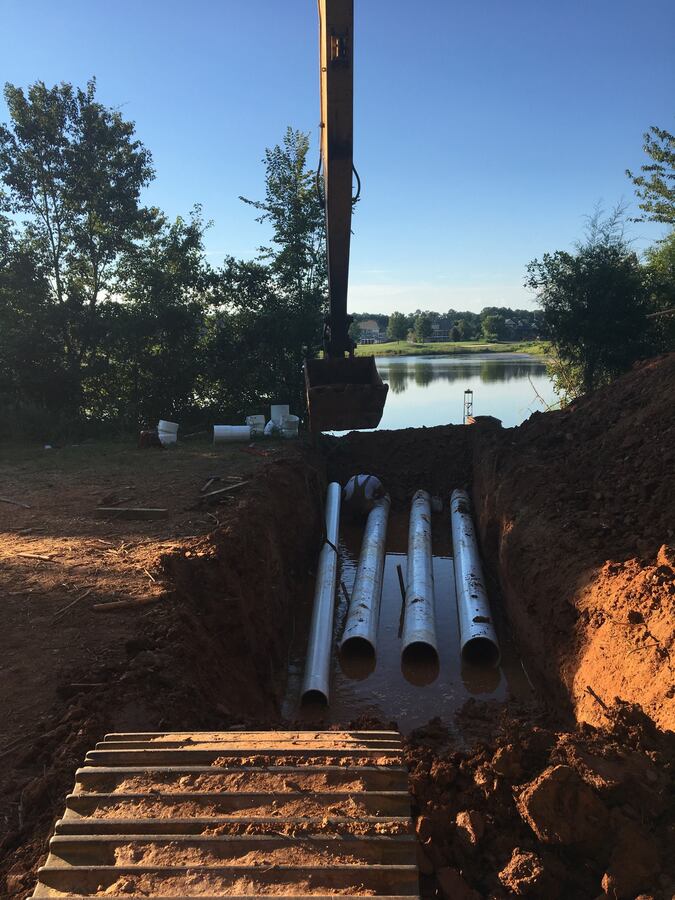
In the world of lake and pond management, spillway siphon systems serve as a highly effective and advantageous tool – especially for older water bodies with aging primary spillways. This brief guide brough to you by Aquatic Restoration dives into the intricacies of spillway siphon systems to highlight their benefits, functionality, and importance in modern water management practices.
If you’d like to consult with retention pond maintenance professionals, then call Aquatic Restoration to schedule a convenient and flexible appointment. Our team is ready to take your call or message today.
Firstly, let's understand what spillway siphons entail. Unlike traditional primary spillways that often consist of pipes through the bottom of the dam and vertical risers made of corrugated metal, spillway siphons offer a more sophisticated and efficient alternative. These systems utilize siphon tubes or pipes to regulate water levels and manage overflow in lakes and ponds.
Spillway siphons operate based on the principle of siphon action, wherein a vacuum is created to draw water from the reservoir through the siphon tubes. This action is initiated by ensuring the siphon tubes are filled with water, thereby creating a continuous flow as gravity pulls water from the higher elevation to the lower elevation.
The advantages of spillway siphons are fivefold:

When considering a spillway siphon system installation, it is vital that you engage experienced professionals familiar with water management and engineering principles. Proper design, sizing, and placement of siphon tubes are key factors for optimal performance.
Furthermore, routine maintenance of spillway siphons involves periodic inspections to check for any obstructions, sediment buildup, or potential issues that may impede water flow. Regular cleaning and upkeep ensure continued functionality and efficiency of the system.
If you’d like to hire time-tested pond maintenance professionals, then consider the seasoned specialists at Aquatic Restoration. With over 35 years of industry practice, we bring unparalleled knowledge and experience. Call Aquatic Restoration to schedule a consultation or on-site visit for as soon as possible.
Recreational lakes are valuable community and private assets, offering opportunities for boating, fishing, swimming, and relaxation. Over time, however,…
Stormwater ponds form a part of modern stormwater management systems. As the name suggests, they collect and manage runoff from…
Sediment buildup is one of the biggest threats to lakes and ponds. It not only impacts water quality but also…
If you own a pond or lake, you know that proactive maintenance is an integral part of keeping the…
If you’ve ever walked outside and noticed your lake suddenly turn a murky shade of green, you’re not alone. Many…